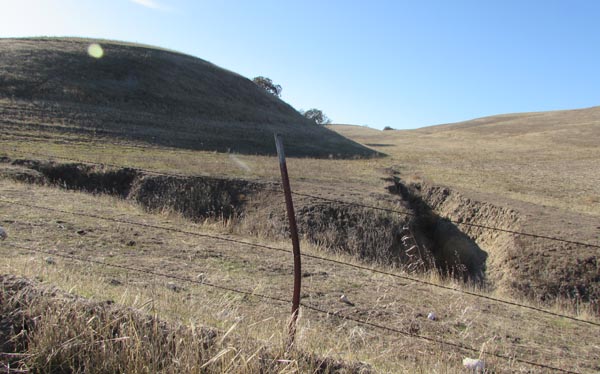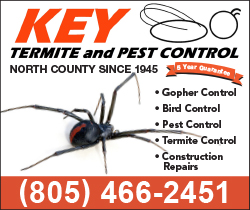Meteorite falls to earth in Creston in October

Once the coordinates (35°34’13″N, 120°28’21″W) were obtained from the AMS website and entered into Google Earth, the impact site is fairly easy to locate. A short drive north along Highway 41, a few miles past Camp 8 Road goes right to the sparsely populated location. No fragments were found during a reporting investigation over the weekend, but there was one bent t-post on the fence line along the road. Could this be the post that shattered the meteorite?
Event draws the attention of international meteorite hunter
–A meteorite crashed and exploded a few miles from Creston in October. It was one of two meteorite events the night of Oct. 23 that was witnessed throughout California. Both events were tracked by a number of meteorite-watch sites and the Creston event, assigned the event number 2635-2015 by the American Meteor Society. The event drew the attention of international meteorite hunter Robert Ward.
The American Meteor Society received over 300 reports of two fireballs over the far western USA on Friday, Oct. 23. Observers from as far as Tucson, Ariz., southwestern Utah and from Sacramento to San Diego reported seeing a bright light in the sky. Reports from local residents were also filed with the American Meteor Society.
Ward, who lives in Prescott, Arizona, saw the reports of a significant meteorite fireball over California and using data from meteorite tracking sites, narrowed the event to specific coordinates near Creston. In an interview, Ward stated that he arrived at the impact point on Oct. 27 and recovered enough fragments to reassemble the majority of the stone. The stone had hit a metal fence post and shattered. Other meteorite hunters claim to have retrieved a number of fragments, which have already been sliced and are being offered for sale. Ward stated his specimens were submitted to the Center for Meteorite Studies at Arizona State University to be authenticated.
The Creston meteorite official name is “Creston,” and it was classified as a L6 Ordinary Chrondrite. Chrondites consist of small particles condensed and crystallized from hot solar nebula to form small spheres called chrondrules. Chrondites are primordial matter that has been unchanged for 4.5 billion years. According to Vince Pellerin from the Santa Lucia Rockhounds headquartered in Paso Robles, 95 percent of meteorites are Chrondrite.
Most meteorite hunters follow fireball sightings to retrieve fragments for their private collections and to sell or trade. The International Meteorite Collectors Association has a code of ethics that collectors are expected to follow. Some meteorite fragments sell for thousands of dollars.
Pellerin states collecting meteorites and rocks often go hand-in-hand. “There is nothing wrong with collecting meteorites as long as it is done with the permission of property owners,” said Pellerin. “There are many meteorite dealers.” Pellerin said one of the best places to purchase meteorites is at Quartzite, Arizona during the annual rock and gem sales in February. “You can find meteorites from all over the world.”
Once the coordinates (35°34’13″N, 120°28’21″W) were obtained from the AMS website and entered into Google Earth, the impact site is fairly easy to locate. A short drive north along Highway 41, a few miles past Camp 8 Road goes right to the sparsely populated location. No fragments were found during a reporting investigation over the weekend, but there was one bent t-post on the fence line along the road. Could this be the post that shattered the meteorite?





















